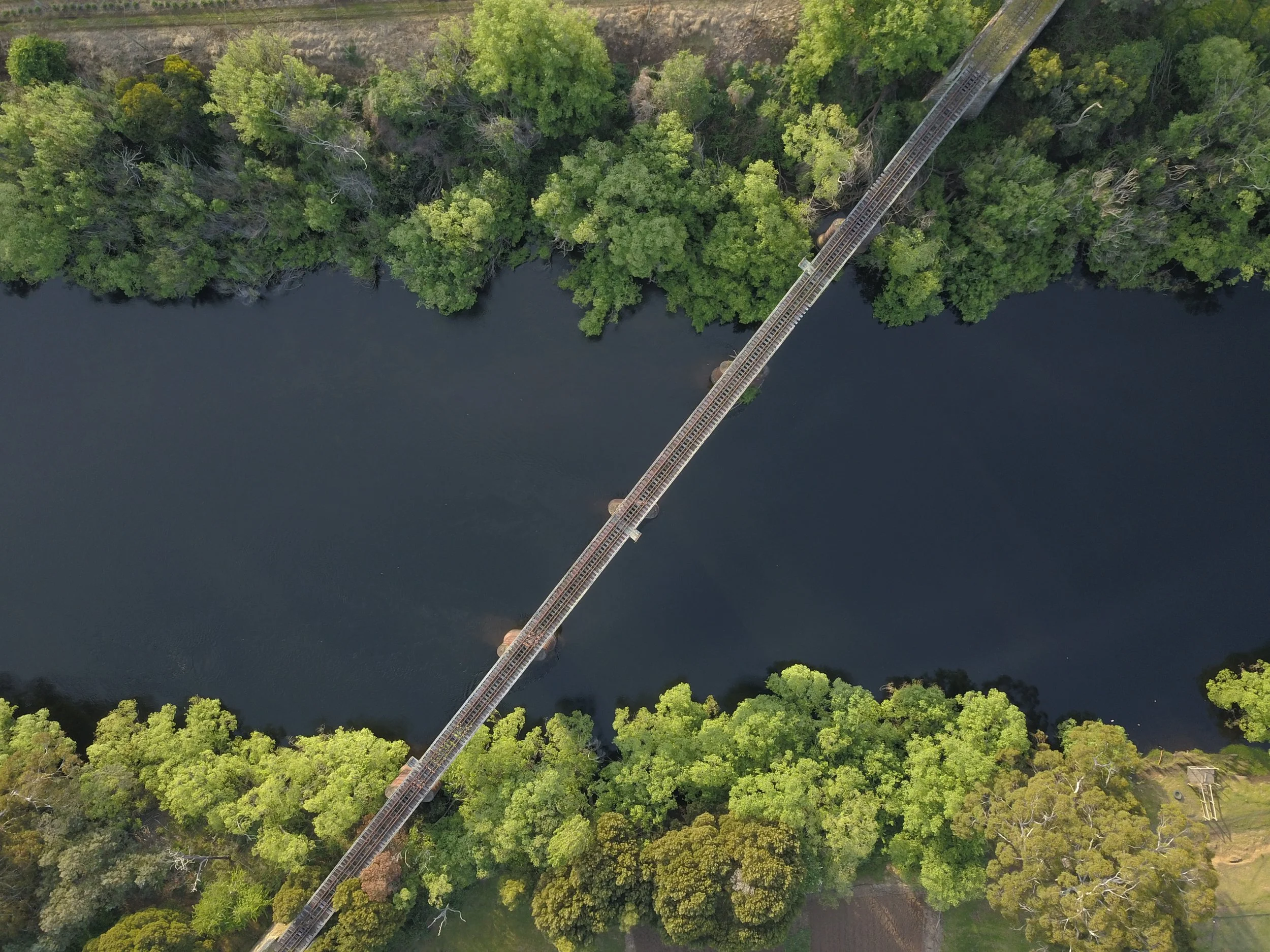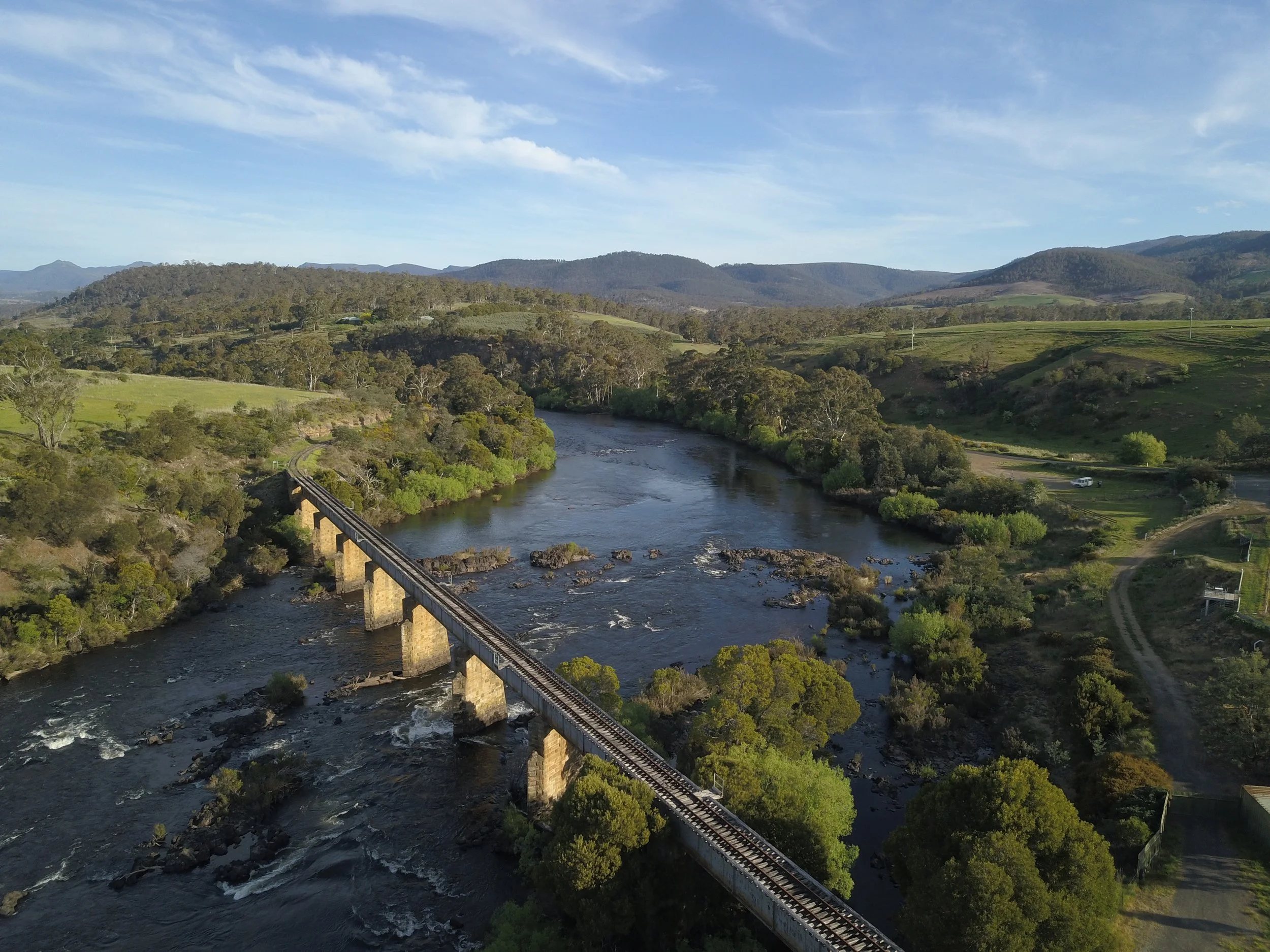
Our Plan
The Derwent Valley Railway has the unique opportunity to become the backbone of the region, linking many existing high quality tourism attractions and experiences through a multi-stage development plan.
World Class Experience
Once we complete our three-stage plan to upgrade rail infrastructure as far as Mt Field National Park, visitors will be able to sample the fresh produce and boutique products of exceptional quality for which the Valley is known, all while enjoying the magnificent track-side views in a relaxed environment.
Choose Your Adventure
The Derwent River and surrounding landscape is popular among many adventure seekers including mountain bikers, kayakers, hikers and anglers. The Derwent Valley Railway will venture to many places otherwise inaccessible by road, opening the door to new adventure tourism destinations.
Bikes, kayaks and other equipment will be transported free of charge aboard our services.
Wilderness Within Reach
National Park Station, on the edge of Mt Field National Park, is where the railway meets the wilderness of the south-west. Spectacular waterfalls, rivers and forests are all within easy walking distance of the Station. Picnic and camping facilities are also available within the National Park.

Stage 1
Stage one involves the replacement of worn sleepers, laying of new ballast and realignment of the rails within our leased area between Third Avenue and Back River Road, New Norfolk.
Before carrying out these civil works, we will need to obtain approval by the Office of the National Rail Safety Regulator (ONRSR) of a fully updated Safety Management System and Operations Plan. We will also need TasRail to approve plans for the safe running of trains at the “interface” between the boundaries of our leased railway land and the public roads referred to above.
Once the civil works are completed, we can resume the operation of train services, in 2026.

Stage 2
Railway infrastructure will be upgraded as far as Plenty, home to the Salmon Ponds, one of the Valley’s most popular attractions.
External funding required to complete this stage has been calculated at several million dollars, as rail bridges and culverts will need to be upgraded as well as the replacement of sleepers and the laying of ballast.
Construction of expanded rail maintenance facilities at New Norfolk as a community workshop to provide technical education, training and skilling opportunities has already been completed.

Stage 3
In Stage 3, further upgrades of the rail corridor will enable the extension of passenger train journeys from Plenty to Mt Field National Park.
While the existing railway line is generally intact, allied infrastructure must be brought up to the Rail Safety Regulator’s standards for passenger train operations. The locomotives and carriages owned by the DVR require varying degrees of maintenance and modernisation to ensure the tourism experience is as comfortable as it is authentic.
Costly infrastructure improvements will require corporate, community and government support. In return, the economic activity generated from the resumption of train services to Plenty and eventually to National Park will create employment opportunities, both directly with the Railway, and indirectly with local and regional businesses that benefit from our heritage tourism activities.
A well-supported heritage railway will also stimulate interest in and enhance the reputation of the Derwent Valley.
Restoration of the Line between New Norfolk and Boyer to preserve the connection to the wider Tasmanian Rail Network (TRN) is also on our radar. It would enable state-wide rail tours to be run in partnership with Don River Railway and the Tasmanian Transport Museum.



